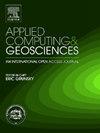Novel application of unsupervised machine learning for characterization of subsurface seismicity, tectonic dynamics and stress distribution
IF 3.2
Q2 COMPUTER SCIENCE, INTERDISCIPLINARY APPLICATIONS
引用次数: 0
Abstract
Our study pioneers an innovative use of unsupervised machine learning, a powerful tool for navigating unclassified data, to unravel the complexities of subsurface seismic activities and extract meaningful patterns. Our central objective is to comprehensively characterize seismicity within an active region by identifying distinct seismic clusters in spatial distribution, thereby gaining a deeper understanding of subsurface stress distribution and tectonic dynamics. Employing a diverse range of clustering algorithms, with particular emphasis on Fuzzy C-Means (FCM), our research meticulously dissects the intricate physical processes that govern a complex tectonic zone. This technique effectively delineates distinct tectonic zones, aligning seamlessly with established seismological knowledge and underscoring the transformative potential of Artificial Intelligence (AI) in analyzing regional subsurface phenomena, even under conditions of data scarcity. Moreover, associating earthquakes with specific seismogenic structures significantly enhances seismic hazard analyses, potentially paving the way for autonomous insights that inform engineering hazard assessments.
无监督机器学习在表征地下地震活动性、构造动力学和应力分布方面的新应用
我们的研究开创性地使用了无监督机器学习这一用于浏览未分类数据的强大工具,以揭示地下地震活动的复杂性并提取有意义的模式。我们的核心目标是通过识别空间分布中不同的地震群,全面描述活跃区域内的地震活动特征,从而更深入地了解地下应力分布和构造动态。我们的研究采用了多种聚类算法,尤其侧重于模糊 C-Means (FCM),细致地剖析了支配复杂构造带的错综复杂的物理过程。这项技术有效地划分了不同的构造带,与既有的地震学知识完美地结合在一起,并强调了人工智能(AI)在分析区域地下现象方面的变革潜力,即使在数据匮乏的条件下也是如此。此外,将地震与特定的成震结构联系起来,大大增强了地震灾害分析的效果,有可能为自主洞察力铺平道路,为工程灾害评估提供依据。
本文章由计算机程序翻译,如有差异,请以英文原文为准。
求助全文
约1分钟内获得全文
求助全文
来源期刊

Applied Computing and Geosciences
Computer Science-General Computer Science
CiteScore
5.50
自引率
0.00%
发文量
23
审稿时长
5 weeks
 求助内容:
求助内容: 应助结果提醒方式:
应助结果提醒方式:


